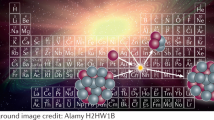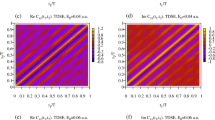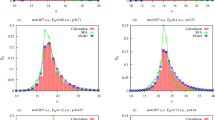Abstract
RECENT work in this laboratory has shown that the irregular doublet law, first discovered in 1920 by G. Hertz in the X-ray region, and since then extended by Millikan and Bowen for the optical region, is capable of much wider application. Millikan and Bowen have applied the law for the prediction and identification of spectra of atoms which are stripped to one or two valency electrons by vacuum discharge, and in the case of higher valence elements, for inner transition lines. But the law can be applied for the prediction of spectra of elements with a larger number of valency electrons giving rise to complicated spectra. The extension of the law in its most general form can be thus enunciated:
This is a preview of subscription content, access via your institution
Access options
Subscribe to this journal
Receive 51 print issues and online access
$199.00 per year
only $3.90 per issue
Buy this article
- Purchase on Springer Link
- Instant access to full article PDF
Prices may be subject to local taxes which are calculated during checkout
Similar content being viewed by others
Author information
Authors and Affiliations
Rights and permissions
About this article
Cite this article
SAHA, M., KICHLU, P. Extension of the Irregular Doublet Law. Nature 121, 244–245 (1928). https://doi.org/10.1038/121244b0
Issue Date:
DOI: https://doi.org/10.1038/121244b0
Comments
By submitting a comment you agree to abide by our Terms and Community Guidelines. If you find something abusive or that does not comply with our terms or guidelines please flag it as inappropriate.



